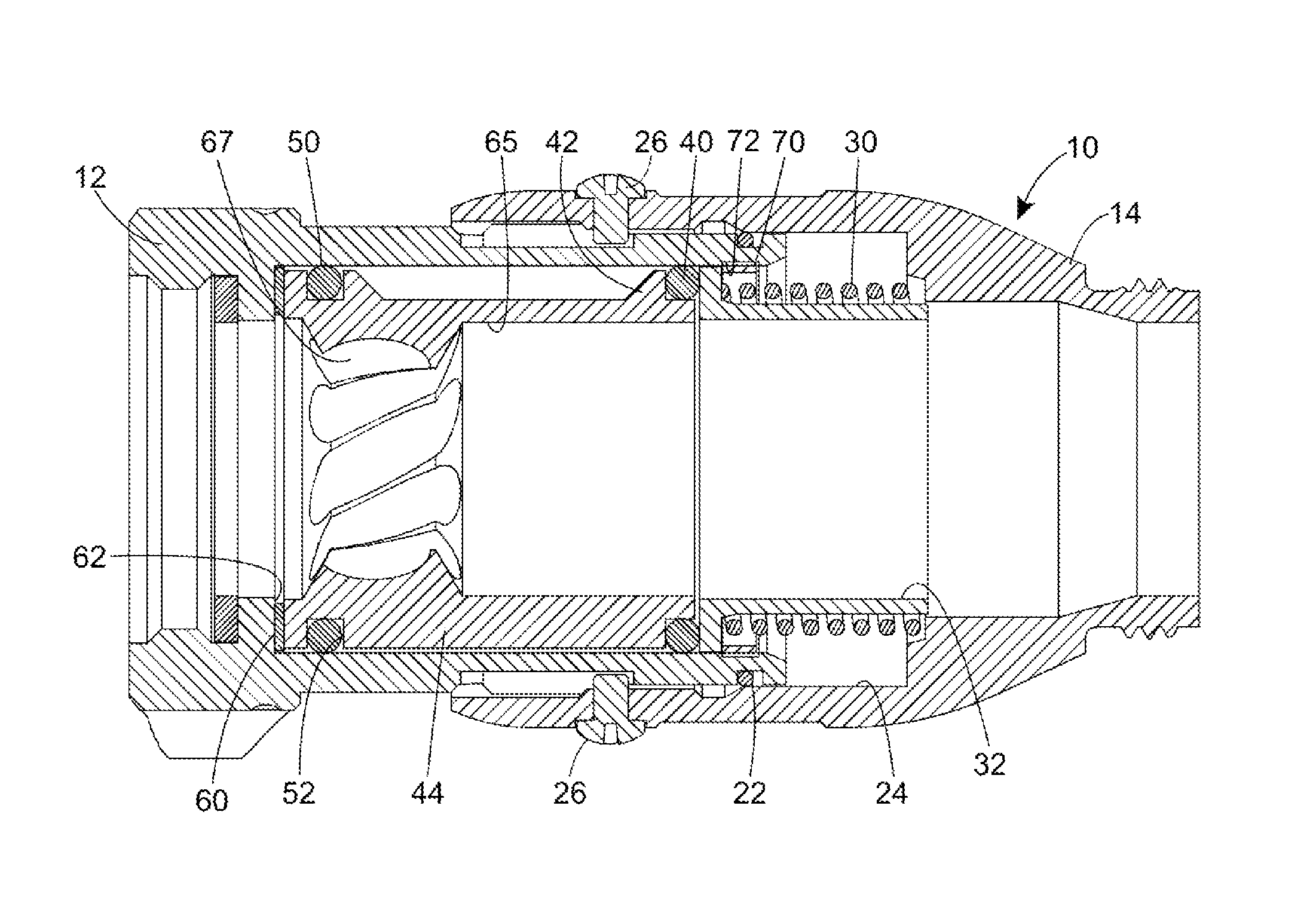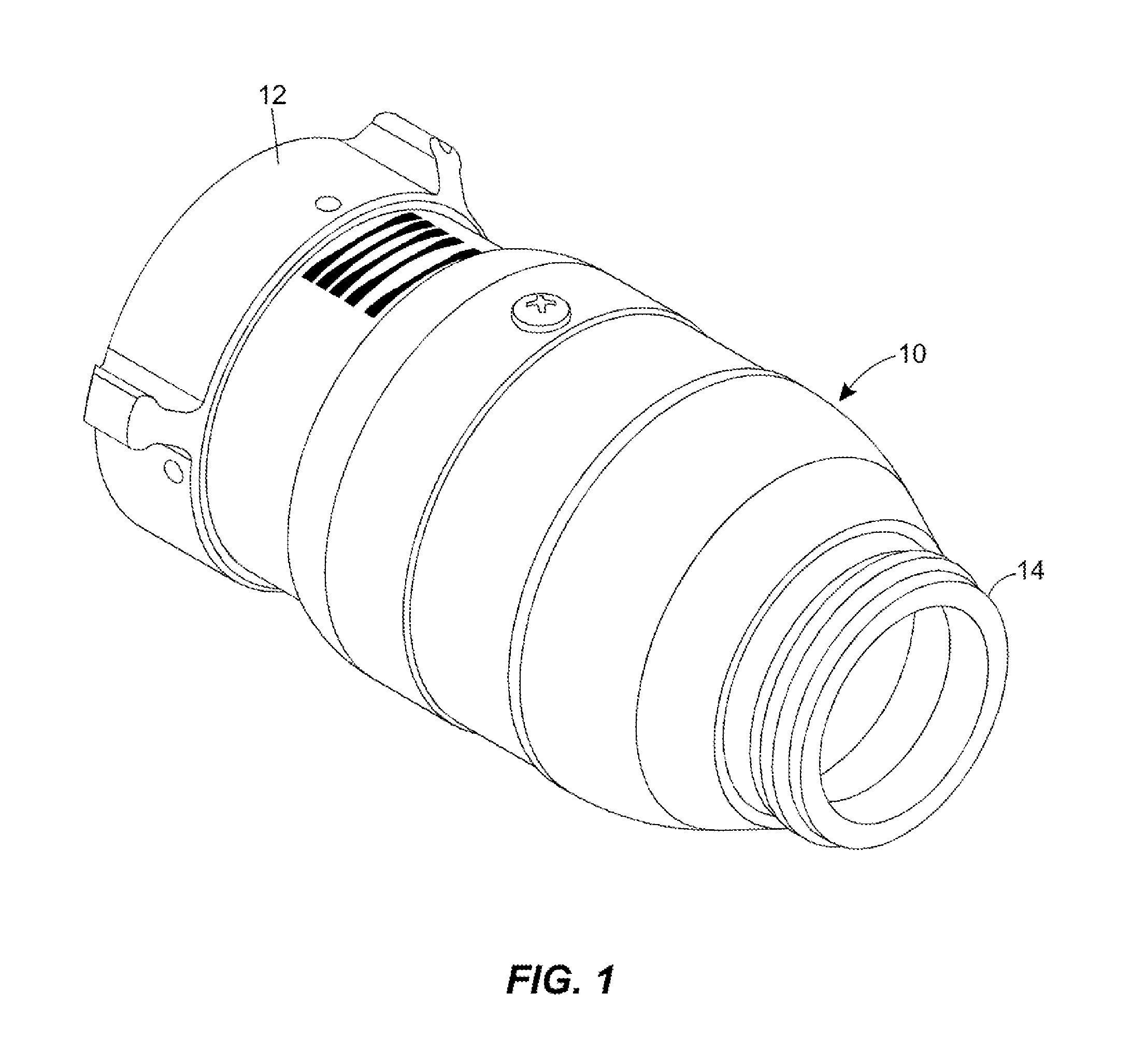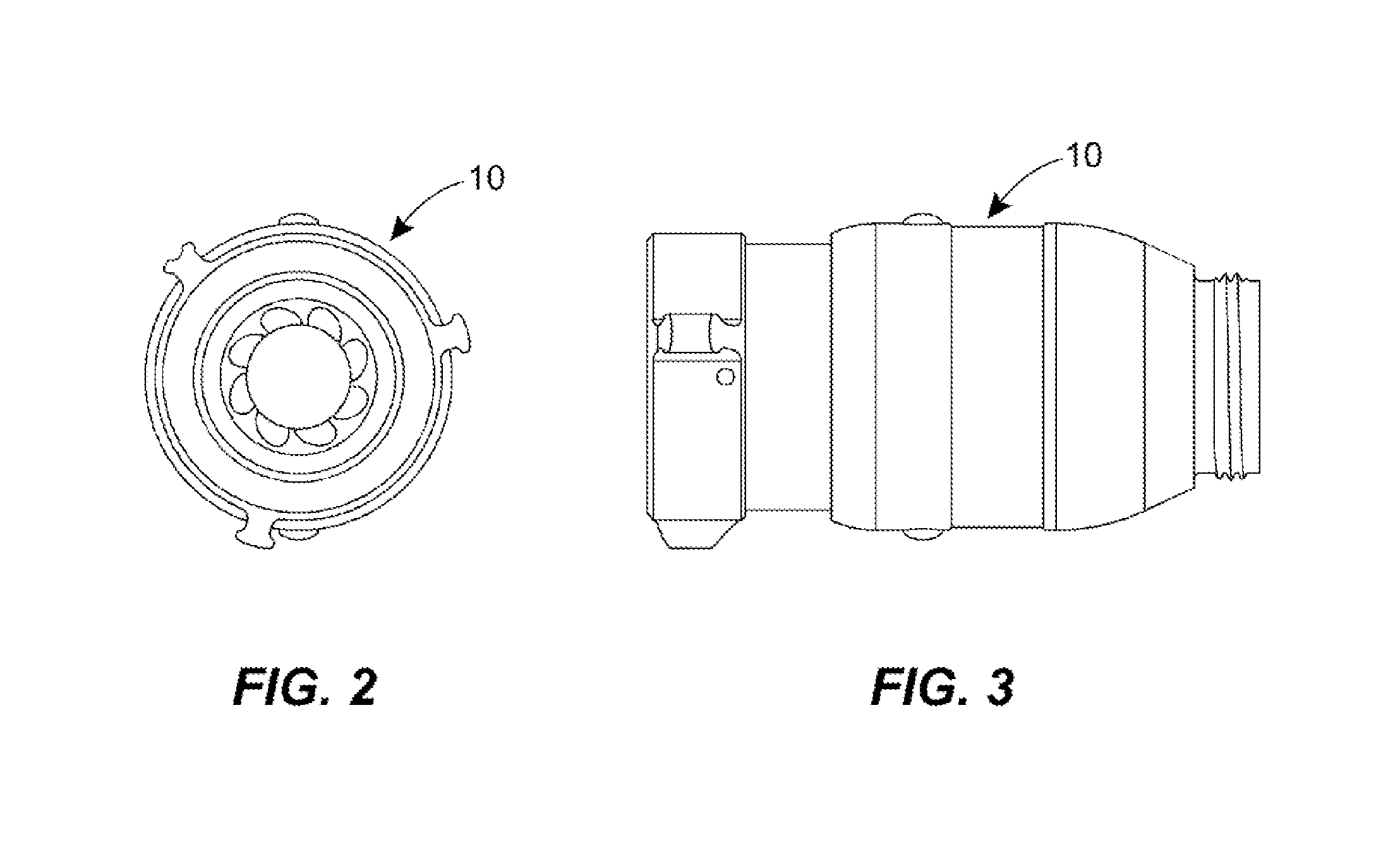Haptic feedback flow indicator
a flow indicator and haptic technology, applied in the direction of speed/acceleration/shock measurement, measurement devices, instruments, etc., can solve the problems of insufficient extinguishing agent, insufficient visibility beyond, and hazardous conditions within the burning structure, and achieve the effect of augmenting the haptic sensation
- Summary
- Abstract
- Description
- Claims
- Application Information
AI Technical Summary
Benefits of technology
Problems solved by technology
Method used
Image
Examples
Embodiment Construction
[0035]The most preferential haptic flow indicator 10 is depicted in FIGS. 1-8. A fire extinguishing agent such as water or a foam solution enters the indicator on the left hand side of the page by way of an inlet 12 through a fire fighting hose connection. The most prevalent type of connection used in the in USA for handheld nozzles is a female 1.5″ National Hose thread according to National Fire Protection Association standard NFPA 1963, but other thread sizes, types, genders may also be used. The indicator may have the fire hose connection integrally formed into the inlet of the indicator, or alternatively the inlet may include a fire hose coupling affixed to the distal end in a non-rotating manner, or so that it can rotate with respect to the inlet by use of a sliding fit or by bearing balls. A sealing connection to the fire hose discharge is made by use of a fire hose gasket of the like.
[0036]Water travels through the indicator and is discharged to the right through the outlet 1...
PUM
 Login to View More
Login to View More Abstract
Description
Claims
Application Information
 Login to View More
Login to View More - R&D
- Intellectual Property
- Life Sciences
- Materials
- Tech Scout
- Unparalleled Data Quality
- Higher Quality Content
- 60% Fewer Hallucinations
Browse by: Latest US Patents, China's latest patents, Technical Efficacy Thesaurus, Application Domain, Technology Topic, Popular Technical Reports.
© 2025 PatSnap. All rights reserved.Legal|Privacy policy|Modern Slavery Act Transparency Statement|Sitemap|About US| Contact US: help@patsnap.com



